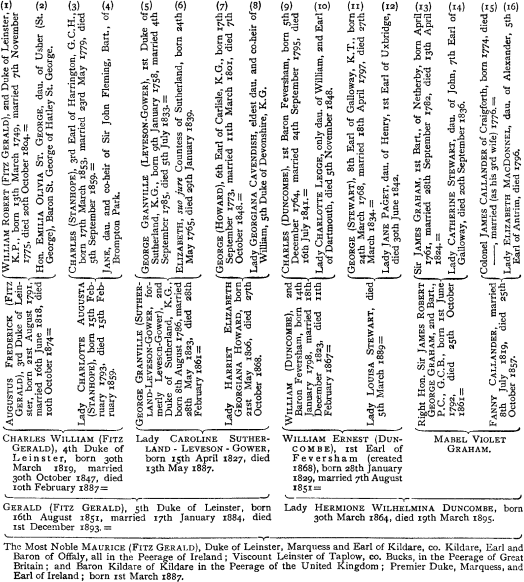Self. Parents. Grand- Gt.-grand- Gt.-gt.-grand-
parents. parents. parents.
1. Your Father's Father's Father's Father.
2. Your Father's Father's Father's Mother.
3. Your Father's Father's Mother's Father.
4. Your Father's Father's Mother's Mother.
5. Your Father's Mother's Father's Father.
6. Your Father's Mother's Father's Mother.
7. Your Father's Mother's Mother's Father.
8. Your Father's Mother's Mother's Mother,
9. Your Mother's Father's Father's Father.
10. Your Mother's Father's Father's Mother.
11. Your Mother's Father's Mother's Father.
12. Your Mother's Father's Mother's Mother.
13. Your Mother's Mother's Father's Father.
14. Your Mother's Mother's Father's Mother.
15. Your Mother's Mother's Mother's Father.
16. Your Mother's Mother's Mother's Mother.
It should be distinctly understood that there is no connection whatever between the list of quarterings which may have been inherited, which it is permissible to display, and "
